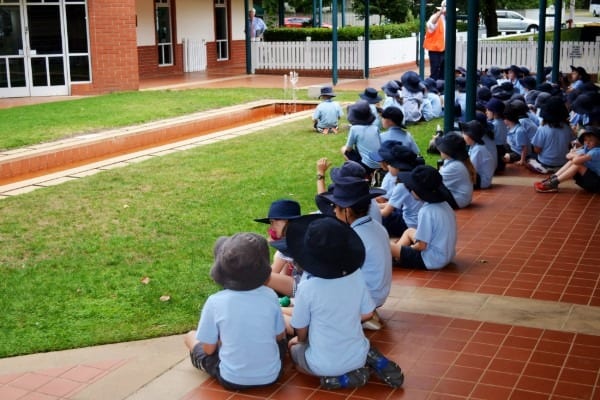Victorian Premier Daniel Andrews has already indicated this as a possibility, declaring while it’s not happening yet they need to be “frank” and “honest” in that “we are going to ask a lot of Victorians”.
Already, 14 countries have nationwide school closures in place, including Japan, Italy Iran, South Korea and Hong Kong and China, with hundreds of millions of kids out of class internationally. The United Nations has declared that, “the global scale and speed of the current educational disruption is unparalleled and, if prolonged, could threaten the right to education.”
School kids internationally have varying options for accessing class materials and lessons online. Students risk missing college admission exams, and falling behind on reading and maths. They are missing vital socialisation and physical activity, along with major milestone days (like graduation).
And working parents internationally are scrambling. To recover lost wages. To find some form of childcare. To work in whatever ways they can, if they can.
We are yet to see how this would play out in Australia, but as well as disruption to educational opportunities, we can be sure that school closures would raise numerous challenges for working parents.
Managing school holiday periods is difficult enough — but there are holiday camps, grandparents, public holidays and planned family trips that make coping a little easier. There is also the fact that school holidays are a set period with a clear end date that we plan for and work around.
This form of school closures would be very, very different. There would be no ‘school holiday camps’ or presumably, out of school care. Child care centres would likely also need to close, meaning younger children would be at home with their older siblings. If we’re serious about containing this virus, then the usual ‘school holiday activities’ — like water parks, play centres, trips to the library etc– may also be off limits. Given what we know about COVID-19’s risks to those over the age of 60, calling on grandparents for help may not be an option.
So what does that mean for working parents?
The impacts could be broad, costly and, likely, exhausting. Some parents would have no option but to take time out of work — particularly single parents and those in service-based industries who simply can’t work remotely.
For those who can work remotely — and increasingly more of us are being asked to do so, with employers quickly adapting to collaborative tools and video conferencing technologies — having kids at home would require some creative thinking.
It could require parents to tag team on the hours they work — if that’s a possibility in a two-parent household, where both parents can work remotely.
For those running businesses, it could require a period of pulling back on some clients and limiting hours — a difficult cost to take on, particularly in this challenging economic environment.
What it would absolutely require is for workplaces to not only enable remote working where possible, and limit work-related commuting and travel, but to also offer considerable flexibility around the hours in which parents can work.
Neatly fitting in an eight hour work day between the hours of nine to five remotely from home — in a houseful of very bored kids — is going to be a difficult ask. But splitting those hours across a broader day (and sadly that may mean into the night for some parents) may open more possibilities to get the work done. Employers will need to focus on output over time spent in front of a screen.
Working parents will be affected in very different ways, depending on whether they have access to additional help at home, the type of work they do, their internet access and speed, how willing their kids are to sit in front of online lessons and pursue solo activities, and the flexibility that their employer can (and is willing) to enable.
Women, I fear, will bear the brunt of much of these added caring responsibilities, potentially affecting Australia’s female workplace participation rate and ultimately the gender pay gap. Already internationally, the New York Times reports the burden has fallen heavily on women following school closures.
These are strange times. And as Daniel Andrews said, a lot is going to be asked of all of us to play a part in preventing the spread of what the World Health Organisation has finally declared a pandemic.
We should also ask a lot of our governments in supporting working parents during this period. There are subsidies to consider for those parents who will be forced out of work in order to care for their kids (currently offered to employers of parents in Japan), and immediate infrastructure ideas to take on for ensuring kids can access online lessons and entertainment — with plenty of examples internationally on what can be done around getting videoconferencing tools and lessons online immediately.
The shift to mass school closures could happen quickly. Australia has one advantage at this point: we are a number of weeks behind other countries on how quickly this virus is spreading, we can learn from what’s been done elsewhere, and prepare accordingly.


